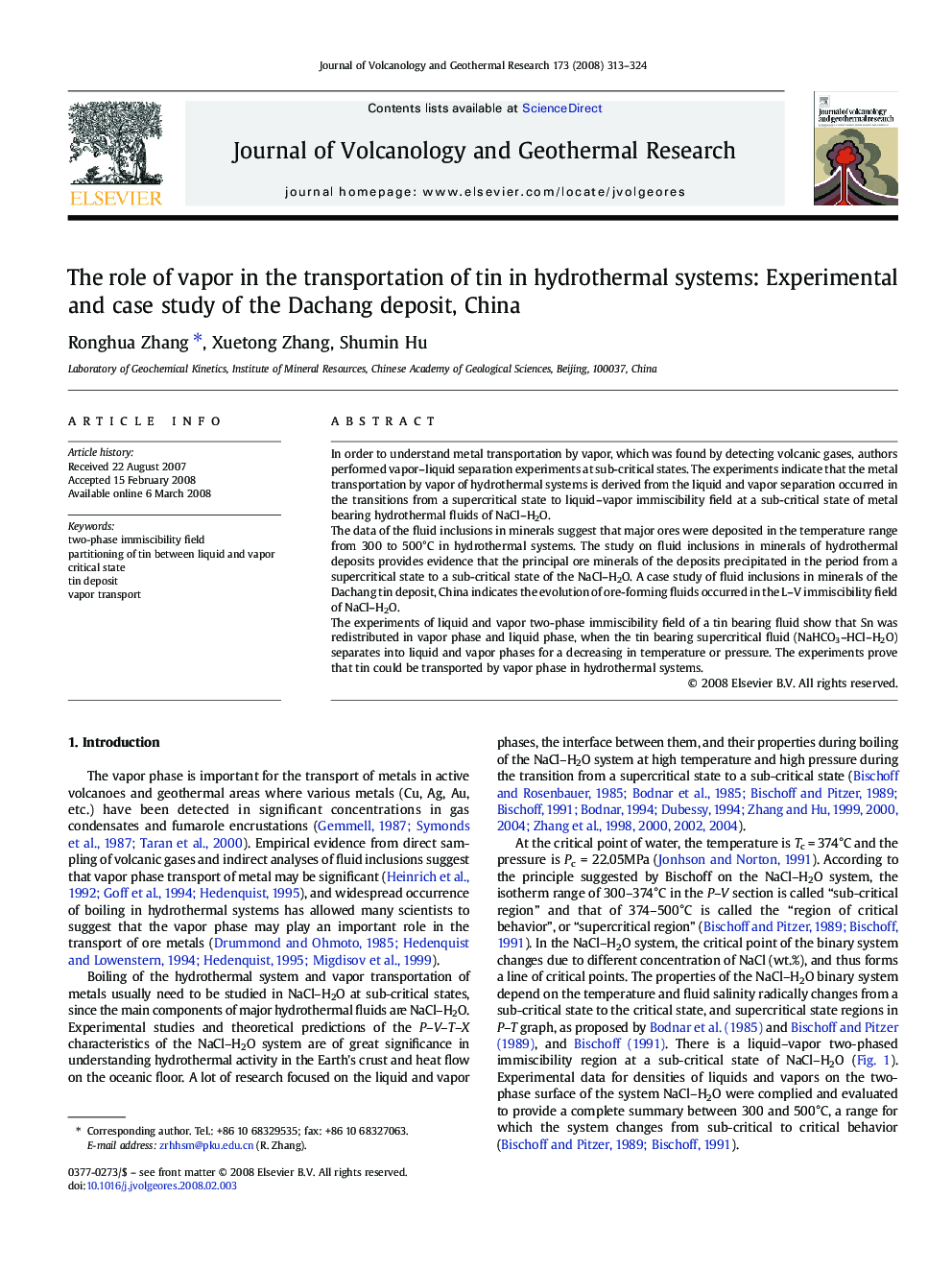| Article ID | Journal | Published Year | Pages | File Type |
|---|---|---|---|---|
| 4715306 | Journal of Volcanology and Geothermal Research | 2008 | 12 Pages |
In order to understand metal transportation by vapor, which was found by detecting volcanic gases, authors performed vapor–liquid separation experiments at sub-critical states. The experiments indicate that the metal transportation by vapor of hydrothermal systems is derived from the liquid and vapor separation occurred in the transitions from a supercritical state to liquid–vapor immiscibility field at a sub-critical state of metal bearing hydrothermal fluids of NaCl–H2O.The data of the fluid inclusions in minerals suggest that major ores were deposited in the temperature range from 300 to 500°C in hydrothermal systems. The study on fluid inclusions in minerals of hydrothermal deposits provides evidence that the principal ore minerals of the deposits precipitated in the period from a supercritical state to a sub-critical state of the NaCl–H2O. A case study of fluid inclusions in minerals of the Dachang tin deposit, China indicates the evolution of ore-forming fluids occurred in the L–V immiscibility field of NaCl–H2O.The experiments of liquid and vapor two-phase immiscibility field of a tin bearing fluid show that Sn was redistributed in vapor phase and liquid phase, when the tin bearing supercritical fluid (NaHCO3–HCl–H2O) separates into liquid and vapor phases for a decreasing in temperature or pressure. The experiments prove that tin could be transported by vapor phase in hydrothermal systems.
